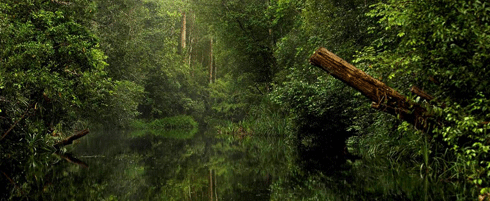
|
Published: 20 December 2010
REDD alert
According to a recent report by the Australian Council for International Development (ACFID) and the Australia Institute, carbon offset schemes – through which developing countries agree to reduce deforestation and forest degradation in exchange for tradable carbon permits – carry significant risks for the Australian aid sector.
The UN’s Reducing Emissions from Deforestation and Forest Degradation (REDD) program offers financial incentives to developing countries to retain carbon stored in forests through reduced logging, fire, farmland expansion and infrastructure development.
The UN estimates that financial flows for greenhouse gas emission reductions from REDD (now referred to as REDD+) could reach up to US$30 billion a year.1
Through aid programs, Australia has established capacity-building and trial REDD programs in developing countries such as Indonesia and Papua New Guinea. But, as with conventional aid, overcoming corruption and misappropriation of revenues will be a key challenge for REDD schemes, says Mr Marc Purcell, ACFID’s Executive Director.
‘If REDD schemes are to benefit communities, they must have sound governance, ensuring real reductions on the global carbon footprint and the maintenance of local communities’ rights,’ says Mr Purcell.
‘There is a risk that Australian companies could be fooled into thinking they are being green buying REDD offsets on a future carbon market, when a lack of transparency and poor forest management may mean that carbon emissions are really leaking from forests into the atmosphere.
‘A worst-case scenario is that REDD schemes become unaccountable and bring no financial benefits to poor communities, with revenues going into the pockets of dodgy companies or dubious officials.’
The ACFID report’s author, Mr Andrew Macintosh – Australian National University’s Associate Director at the Centre for Climate Law and Policy – says the establishment of an effective REDD scheme will take time.
Mr Macintosh believes Australia should continue to invest in base-level capacity building in developing countries and progressively trial pilot REDD projects to ensure the effectiveness of safeguards.
‘However, pilot projects are never going to be able to capture the full range of risks associated with REDD,’ he says.
‘For example, it may be possible to make a reasonably accurate projection of deforestation emissions in a confined area for the purposes of a REDD trial, but it can be an entirely different exercise making the same projection for a whole country.
‘The same applies for monitoring emissions – it is relatively easy to monitor emissions in a small trial area, but very hard to do the same across large countries.’
Monitoring brings its own set of challenges. ‘I’ve been told that two satellite-based monitoring systems currently deployed in Indonesia are not generating consistent data,’ says Mr Macintosh. ‘In Australia, the National Carbon Accounting System has encountered similar issues.’
He also points out that developed countries’ involvement in forestry projects in developing countries over the past 50 years has largely ‘failed to make a significant dent in unsustainable forestry practices.’
‘This should alert us to the need to be cautious about what a REDD scheme can achieve, at least in the short-term,’ he says.
The report’s other key recommendations include:
-
Ensuring that REDD schemes do not worsen poverty and distribute benefits equitably among vulnerable communities (eg proper consultation with affected communities, access to employment opportunities and fair compensation locally).
-
Ensuring that a REDD scheme does not threaten the rights and interests of Indigenous people and local communities in developing countries.
-
Supporting REDD by long-term capacity-building activities financed by developed countries, without reducing or redistributing funds from existing poverty reduction programs.
-
Ensuring basic operational requirements for an effective REDD system in participating developing countries to ensure legitimacy and environmental integrity.
-
Developing an accurate and transparent system for setting emissions baselines and measuring forest carbon emissions.
More information
Can money grow on trees? Reducing emissions from deforestation and degradation (REDD) in developing countries, ACFID Research Paper October 2010, www.acfid.asn.au
1 The term ‘REDD+’ signifies the recent expansion of the REDD program to include activities such as forest conservation, sustainable forest management and increasing forest carbon stocks. See www.un-redd.org




